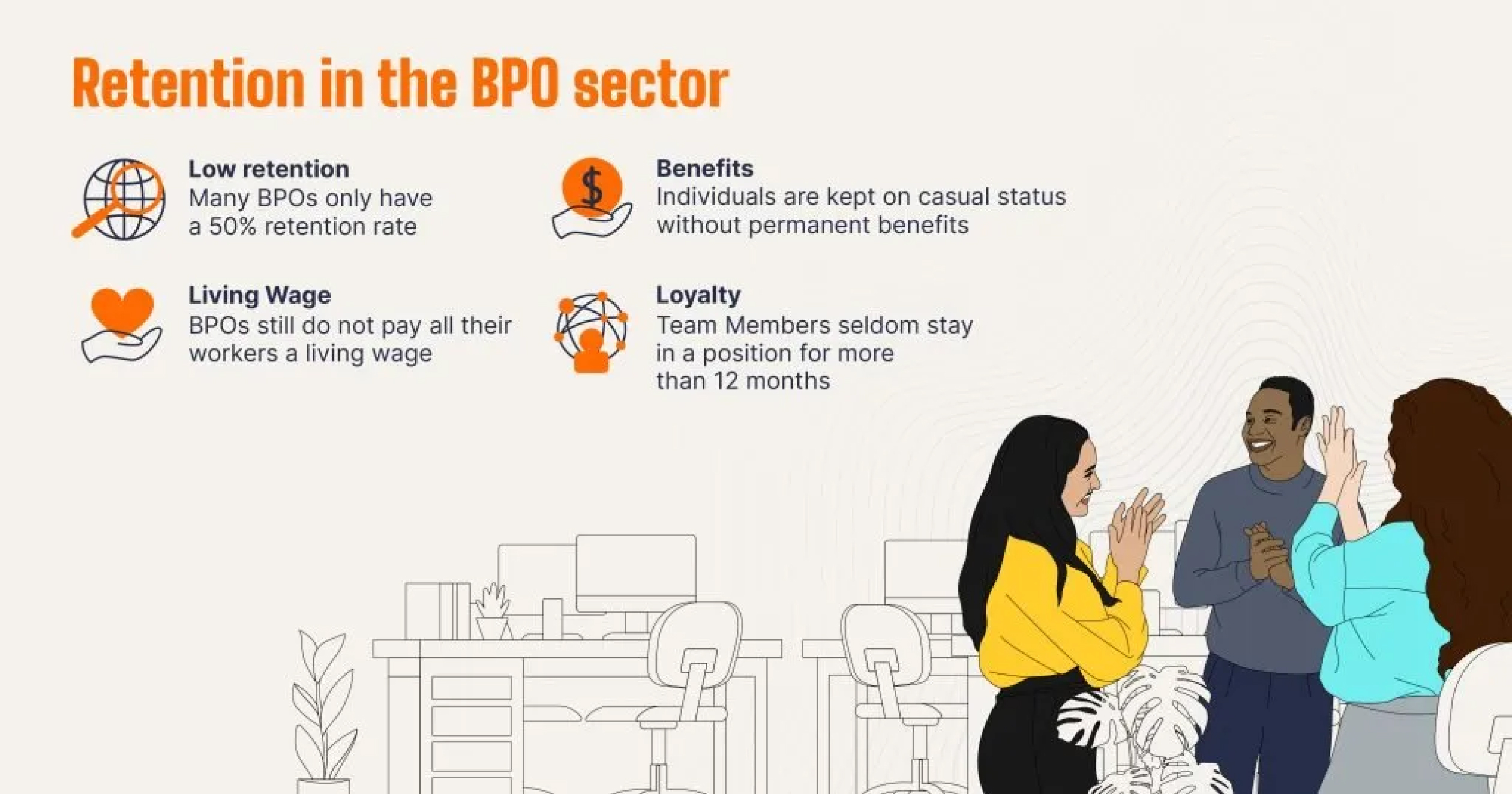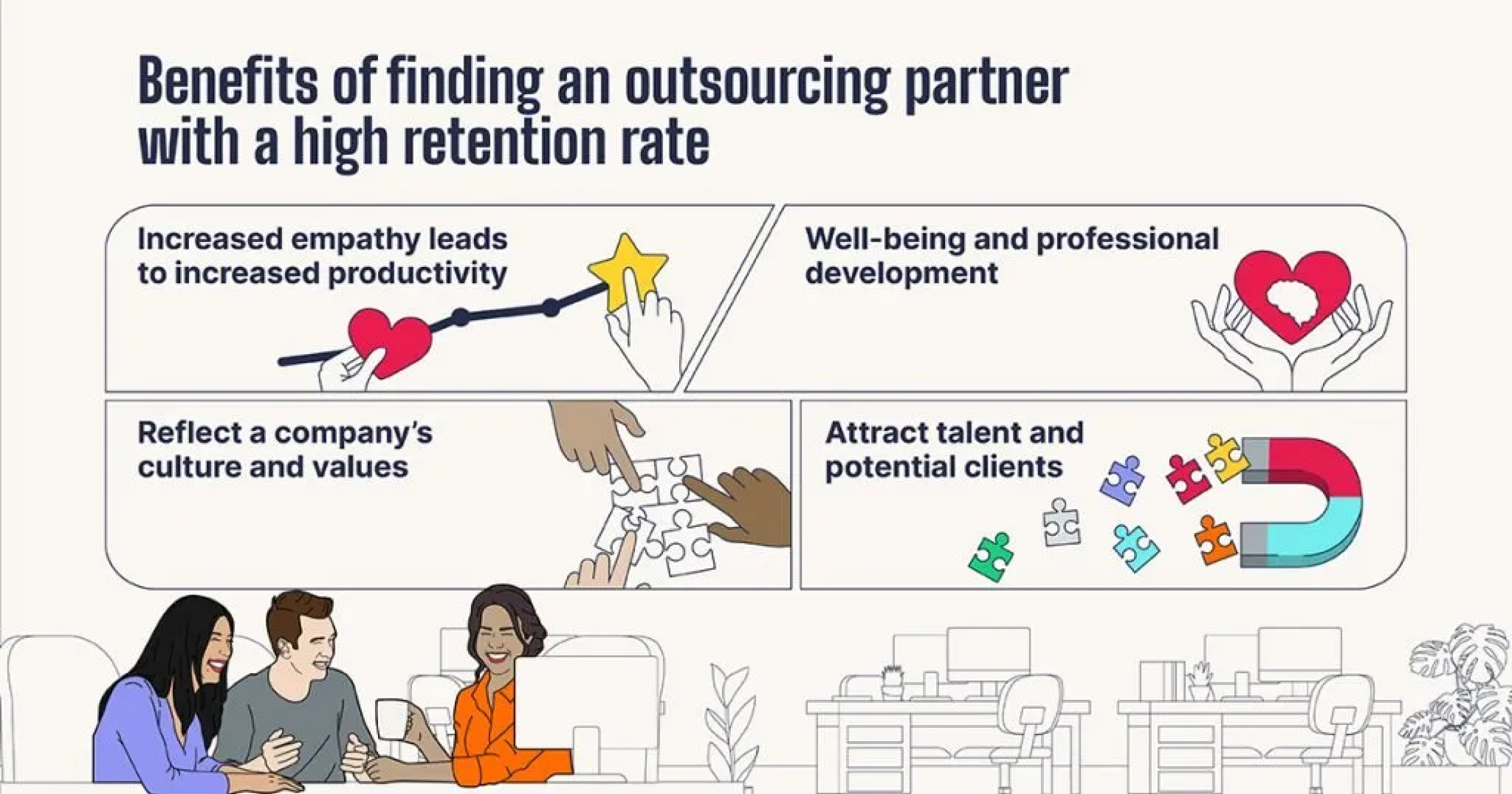Retention rates have become a conventional metric that indicates the success of an organization’s HR practices or the work culture and environment. However, it is so much more than that. A retention rate is the pulse of an organization. In the current competitive business landscape, fostering a culture that encourages and retains talent is an indispensable strategy that not only bolsters the company’s internal workings but also enhances its standing among clients and potential partners.
What is a retention rate?
A company’s retention rate measures the percentage of team members who remain employed over a specific period. In the same vein, a company’s attrition rate, churn rate, or turnover rate, is the same type of metric because it measures the exact opposite, the percentage of team members that have left the organization during a specific timeframe. While there are rare instances where external factors have influenced a company’s retention rate, like retrenchments during the COVID-19 pandemic or the recent rise in tech layoffs, a good retention rate is still a good indicator of the health of a company’s workforce.
Retention rates in the outsourcing sector
Outsourcing is a great way to reduce attrition rates for most types of businesses. Whether planning to outsource customer service-related functions or something more technical, like specialized support engineers, it frees up a company’s People Experience or Human Resource (HR) teams by placing the burden of recruitment and management on the outsourcing partner. This translates favorably into decreased costs to replace team members. Studies have shown that having an outsourced HR partner can decrease turnover rates by as much as 10-14%.
While business process outsourcing (BPO) can improve internal retention rates for a business, it doesn’t always reflect the same rates for the outsourcing company that is providing the service. Old outsourcing models that focus on filling seats and exploiting workers in developing economies, are still in practice today and have become synonymous with unfair or inequitable labor practices.

The fact that most outsourcing companies still pay team members below the proposed living wage in most countries, is indicative of a working environment where individuals face a daily struggle to get by on their remuneration. Casualization, a legal way of keeping workers on a casual status to save costs and curtail obligations mandated by law for permanent staff, such as medical and retirement benefits, keeps individuals floating without job security or future planning.
Both examples contribute to the notoriously low workforce retention in the BPO sector, with some countries churning around 50% of their team members. Traditional “call centers” or support teams are often the hardest hit because team members scarcely stay in a position for more than a year, resulting in a constant talent drain and increasing recruitment costs.
In recent years, the tide has started to turn on companies that have adopted this type of operation. Tighter regulations and employment guidelines have motivated this change to a more humanistic people experience, often through involvement by organizations advocating social development or country-specific legal constructs that have been passed into law. Conscious or ethical outsourcing companies have taken it upon themselves to make the commitment more official by becoming B Corp certified, a designation that signifies verified accountability and transparency, especially concerning employee benefits.
Benefits of finding an outsourcing partner with a high retention rate
For a company that provides outsourcing services, a high retention rate is an invaluable metric that can speak volumes. Finding the right outsourcing partner can come down to the way that a company treats its team members. Many BPOs claim to have the interest of their teams at heart, but upon closer inspection, this is more a process of greenwashing to woo potential clients. However, a retention rate will shed light on what’s happening behind the scenes.
When an outsourced team operates with a high retention rate, it provides a seamless integration with a company’s in-house team, promoting a shared culture and work ethic. This translates to better collaboration, learning, and aligned growth between the in-house and outsourced teams.

Increased empathy leads to increased productivity
A high retention rate is a testament to the human-centric or empathetic approach of a company. Team members are more likely to feel supported and engaged when they see their position as being a longer-term position, fostering a healthier work atmosphere. They will experience higher job satisfaction, which leads to increased productivity and better customer service.
Well-being and professional development
This long-term association between a company and its workforce facilitates career development on many levels. A stable work environment offers opportunities for skill development, professional and personal growth, and advancement. This, in turn, results in a more knowledgeable and skilled workforce, capable of providing higher quality services to clients.
Reflect a company’s culture and values
There is no better indication of the integrity of an organization’s culture or its values, than looking at its retention rates. A culture that values loyalty, teamwork, and professional development, will most definitely have a low churn rate, meaning team members are far less likely to leave that company. It showcases a commitment to fostering an environment where employees feel heard, supported, and part of a larger journey.
High employee retention rates reflect a company’s commitment to its people because it serves as an indicator of trust, camaraderie, and mutual investment between the company and its team members. When a company boasts a consistent and loyal workforce, it signals a positive, nurturing work environment where individuals feel valued, heard, and motivated to stay and grow.
Attract talent and potential clients
A low churn rate indicates stability for the organization and fosters a sense of security among team members. Staff continuity ensures that invested time and resources are not lost on frequent recruitment drives or training programs aimed at getting new hires ready. A solid retention rate promotes a sense of security, providing team members with the confidence to plan for their future within the company and beyond the position they hold. It is also a huge attraction for experienced talent looking for a culture fit or who want to make a long-term commitment to a specific organization that speaks to their beliefs or values.
High retention is a critical factor in attracting potential clients. It’s an assertion of a company’s commitment to quality and expertise. Clients are more inclined to partner with organizations that showcase a stable, dedicated workforce, as this often reflects reliability, expertise, and long-term investment.
Boldr retention success stories
At Boldr, we have numerous high-retention success stories walking in our offices, some having been with us since Boldr’s inception in 2017. We have team members on our UrbanStems team who have been there for 6 and 4 years, which are inspiring tenures in the BPO sphere. We have similar retention rates with our Cratejoy, Brooklinen, and Interfolio teams, where most team members operate within global teams that pivot or scale during periods of rapid expansion or seasonal ramps.
“Our strong retention rates play a pivotal role in fostering client growth,” explains Sandy Reyes, Client Experience Manager. “By deeply understanding our clients’ corporate missions and objectives and consistently delivering exceptional value and service as their trusted partner, we not only maintain our existing clientele but also seize opportunities to expand our business within their various services and departments. Furthermore, this approach allows us to draw in new clients, laying a sturdy groundwork for the expansion of our customer base.”
The impact of a high retention rate extends far beyond the walls of the company itself. It affects the quality of service, the perception of the company among clients, and the overall well-being and professional development of its team members. A stable, loyal workforce is the cornerstone of a company’s success, resonating in its culture, services, and reputation.
According to Pete Eickhaus, Boldr’s Director of Client Experience, high retention rates have added value to our existing clients. “We provide opportunities for our Team Members to grow and connect. Engaged Team Members who are aligned with our purpose and choose to continue their journey with us and our clients, not only improve productivity and customer experience but also strengthen our culture and boost morale. It’s good for business and it’s great for building human connections and a sense of belonging. This enriches the outsourcing journey for our clients.
James Fouche is the Content Manager at Boldr, as well as an author and a columnist. He is passionate about sharing his love of reading and writing with others.


